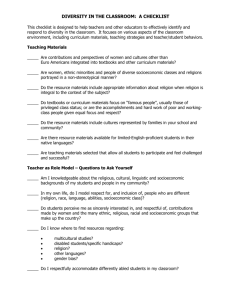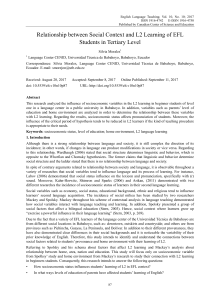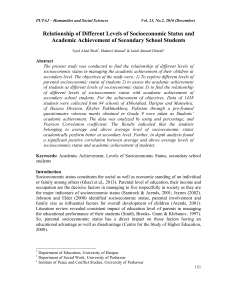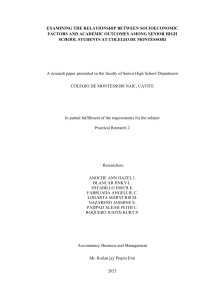Aaron J Hudson Intro to Business Prof. Silverman
advertisement
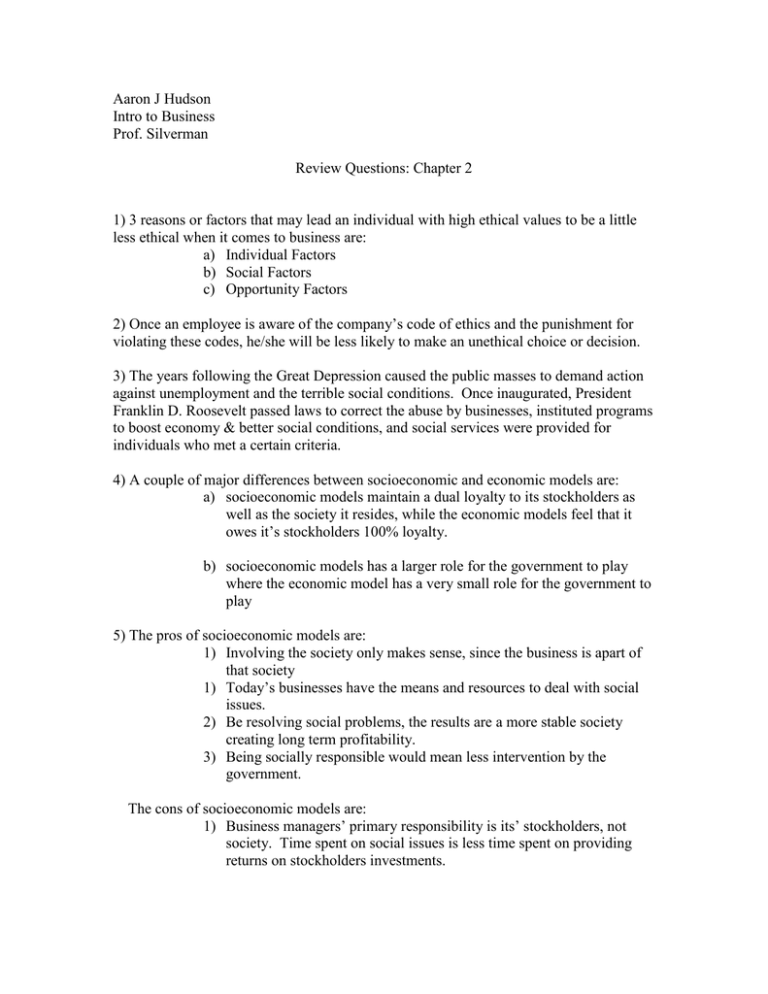
Aaron J Hudson Intro to Business Prof. Silverman Review Questions: Chapter 2 1) 3 reasons or factors that may lead an individual with high ethical values to be a little less ethical when it comes to business are: a) Individual Factors b) Social Factors c) Opportunity Factors 2) Once an employee is aware of the company’s code of ethics and the punishment for violating these codes, he/she will be less likely to make an unethical choice or decision. 3) The years following the Great Depression caused the public masses to demand action against unemployment and the terrible social conditions. Once inaugurated, President Franklin D. Roosevelt passed laws to correct the abuse by businesses, instituted programs to boost economy & better social conditions, and social services were provided for individuals who met a certain criteria. 4) A couple of major differences between socioeconomic and economic models are: a) socioeconomic models maintain a dual loyalty to its stockholders as well as the society it resides, while the economic models feel that it owes it’s stockholders 100% loyalty. b) socioeconomic models has a larger role for the government to play where the economic model has a very small role for the government to play 5) The pros of socioeconomic models are: 1) Involving the society only makes sense, since the business is apart of that society 1) Today’s businesses have the means and resources to deal with social issues. 2) Be resolving social problems, the results are a more stable society creating long term profitability. 3) Being socially responsible would mean less intervention by the government. The cons of socioeconomic models are: 1) Business managers’ primary responsibility is its’ stockholders, not society. Time spent on social issues is less time spent on providing returns on stockholders investments. 2) Corporate time, money, and talent should be focused on maximizing profits, not social issues. 3) Social problems affect society; individual business should not be responsible for the masses. 4) Social problems are the problems of the elected government officials, let them do their job. 6) 6 rights of consumers are: 1) Right to Safety: Must be safe for intended use, must include thorough directions for proper use, and must be tested to ensure product quality and reliability. 2) Right to be Informed: Must have total access to info about product before purchase. 3) Right to Choose: Consumer must have choice of products, offered by different manufactures or sellers to satisfy a particular need. 4) Right to be Heard: Consumers voice will be heard if they have a complaint about any product. 5) Right to Consumer Education: Consumer has right to be fully informed about rights as a consumer. 6) Right to Service: Consumer is entitled to convenience, courtesy, and responsiveness. 7) In history, women have always been considered the homemaker, never equivalent to men with regards to employment. This is the reason why women have been considered a minority in the workforce. 8) The goal of affirmative action programs is to increase the number of minorities on all levels of the workforce. This happens by employing the same number of minorities in the business as are in the surrounding community.

